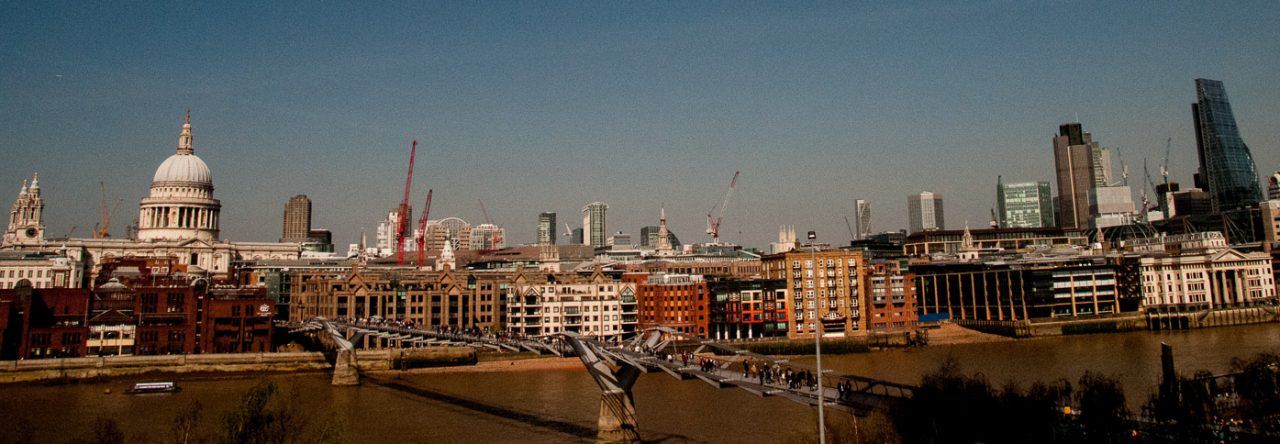By the 1830s central London’s cemeteries were literally overflowing with bodies but it was entrepreneurs, rather than the religious authorities, who responded to the squalor by financing seemly, hygienic concepts of burial in the rural outskirts, now embraced by inner London. The Magnificent Seven is an informal term applied these developments and I am gradually working my way around them. I have now visited Highgate and Abney Park and recently I ventured east to Mile End and Tower Hamlets Cemetery Park.
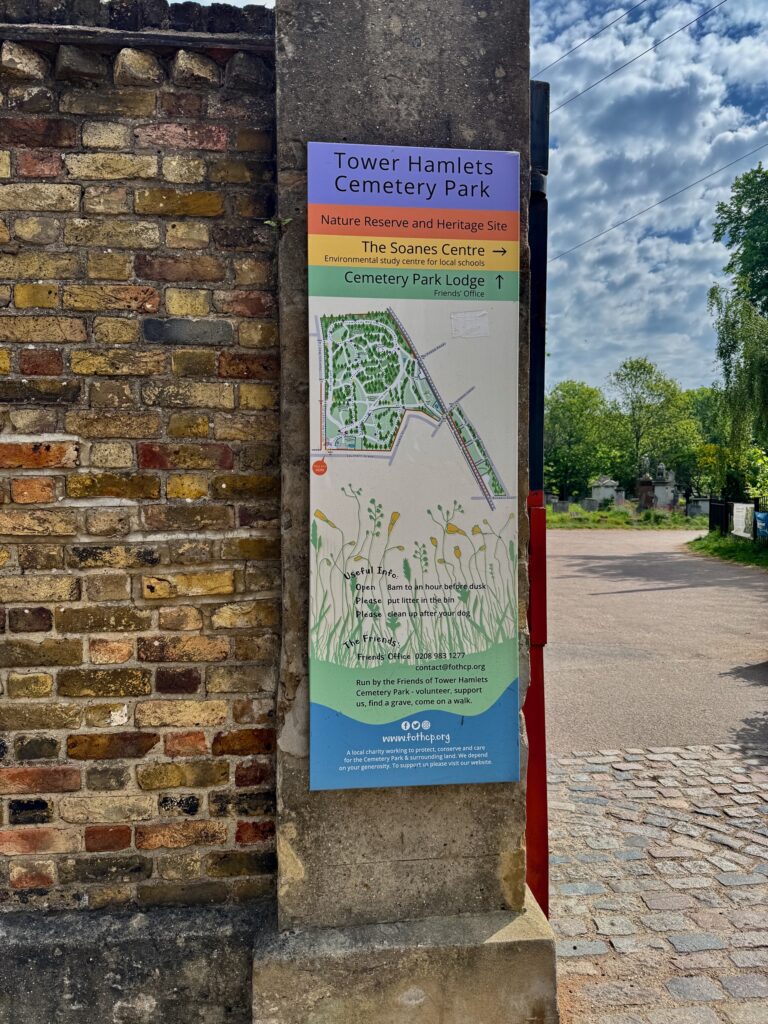
The City of London and Tower Hamlets Cemetery Company was made up of eleven wealthy directors whose occupations reflect the industries of the day: corn merchant, merchant ship broker and ship owner, timber merchant, and Lord Mayor of the City of London. The company bought 27 acres (109,265 m2) of land and the cemetery was divided into a consecrated part for Anglican burials and an unconsecrated part for all other denominations. The Cemetery was very popular with people from the East End and by 1889 247,000 bodies had been interred (the cemetery remained open for another 77 years). In the first two years 60% of the burials were in public graves and by 1851 this had increased to 80%. Public graves were the property of the company and were used to bury those whose families could not afford to buy a plot. Several persons, entirely unrelated to each other, could be buried in the same grave within the space of a few weeks. There are stories of some graves being dug 40 feet deep and containing up to 30 bodies.
I headed straight for the beautifully situated war memorial …
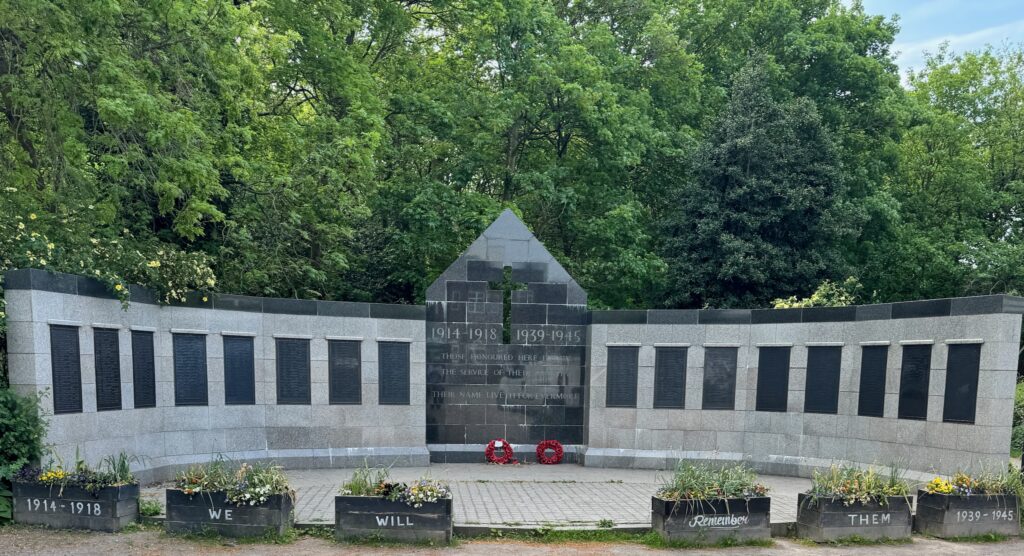
It consistes of 16 bronze tablets carrying a list of 283 names. I often find it incredibly moving to look closely at the names, and particularly the ages, of those who have been commemorated in memorials such as this.
This panel certainly told a story since the first name I came across was that of a 17-year-old called Private W J Thurgood of the Civil Service Rifles …

The rules were that you had to be 18 to join up or be conscripted but it is estimated that around 250,000 boys under that age served during the First World War. Incidentally, the letters P.W.O. stand for the Prince of Wales’ Own.
This image tells a story …

The panel in full …
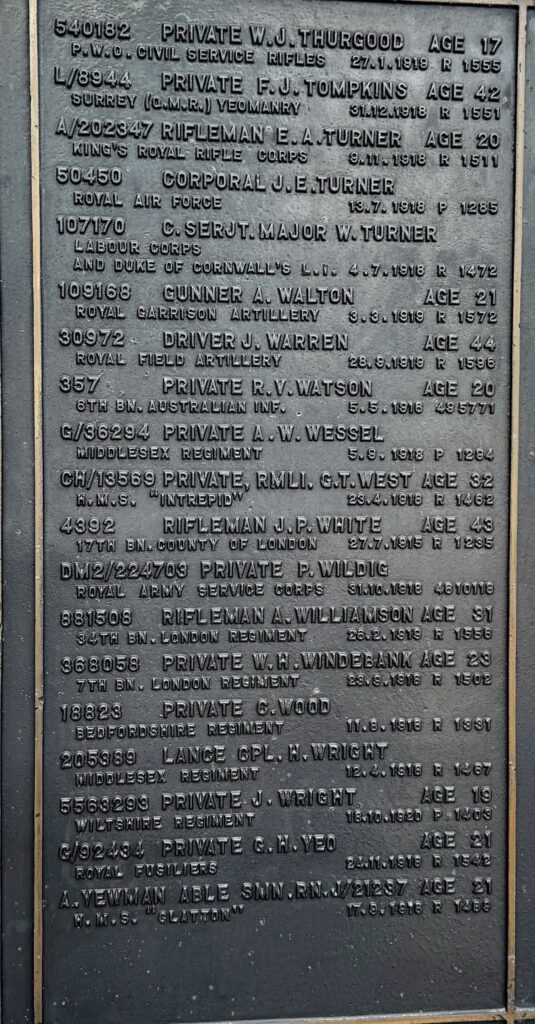
Of the fourteen men listed here where ages are stated, eight are aged 21 or younger.
You can read more about the teenage soldiers of World War 1 here.
A terrible storm at sea is brought to mind here on the family grave of Alfred James Gill and Captain J Warne. I love the details such as the rigging, the bird hovering on the left and what looks like lightning flashing on the right ….
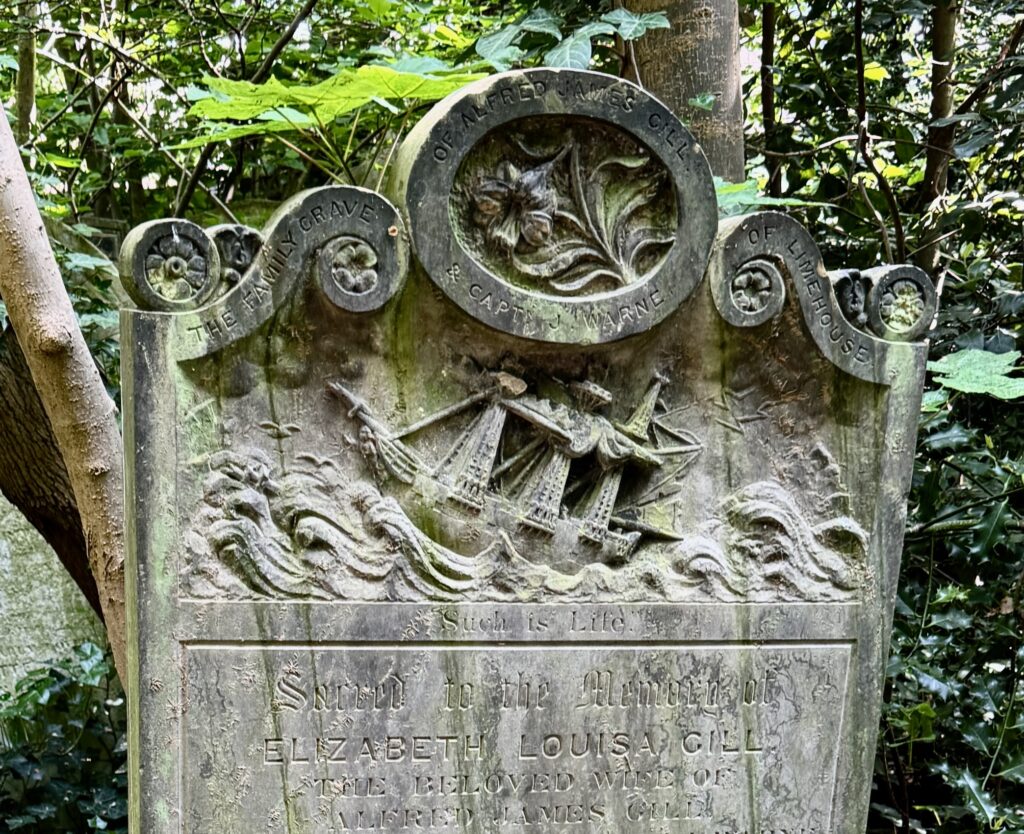
A commemoration of the 190 people who died in Second World War air raids ….
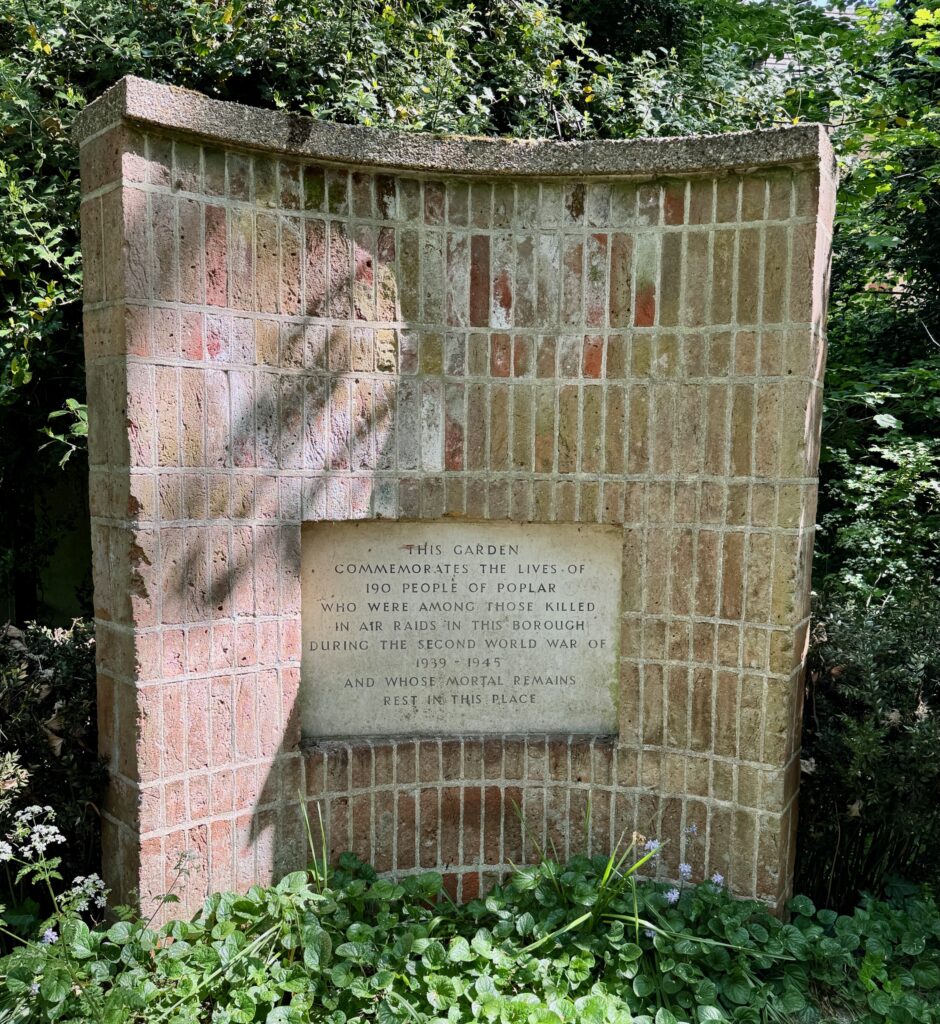
The bricks used in this memorial come from the bombed houses nearby. The mention of a garden in the inscription (“THIS GARDEN…”) is about a garden that does not exist any more because, first, it became a path right up to the brick memorial, and second, the memorial itself was moved to a different location within the cemetery in 1995 because of vandalism.
One of the largest – and certainly the most imposing – family monument in the cemetery, is the Westwood Monument. Joseph Westwood, a businessman, lived at Tredegar House on the Bow Road …

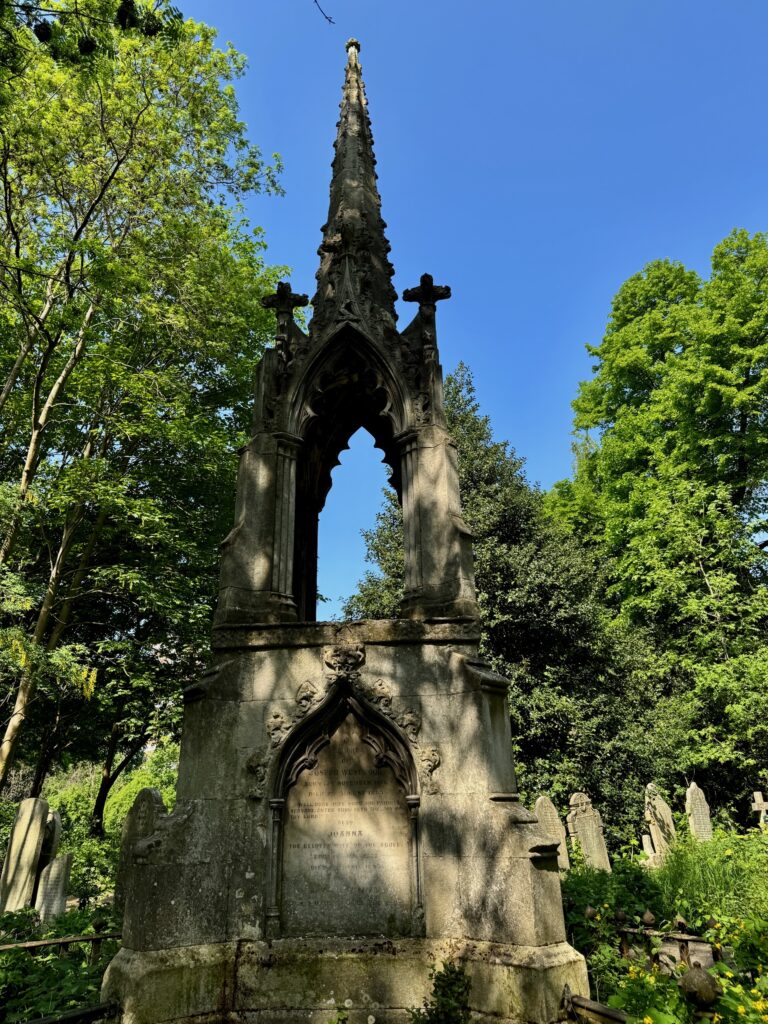
You can read more about the Westwood dynasty here.
A few steps from the Westwood Monument is a 2016 memorial marking the
grave of three of Dr Thomas Barnado’s own children, and more than five hundred children who died whilst in his care who are buried elsewhere in
the Cemetery. Dr Barnado, who started his work with poor children in Stepney in 1868, set up The Ragged School in Stepney Causeway and children’s homes across the East End …

This is the large family vault erected for Ann Francis (d. 1859), wife of
Charles Francis (d.1861), a corn merchant and one of the founding Directors of the Cemetery. This is the highest point in the Cemetery Park and at the time the vault was built it was possible to see the Thames …
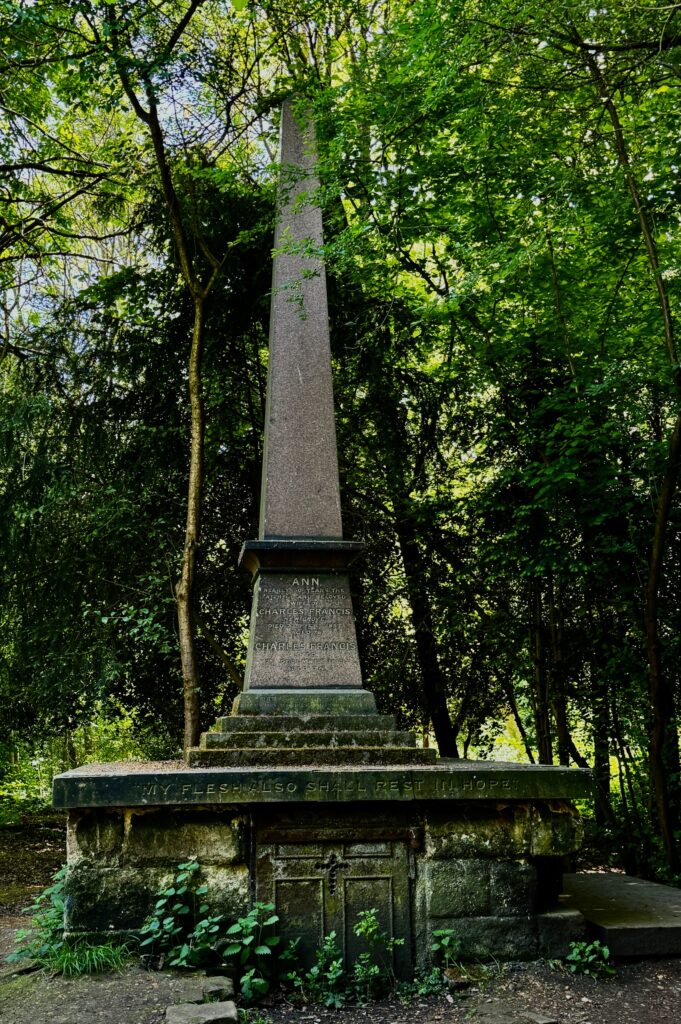
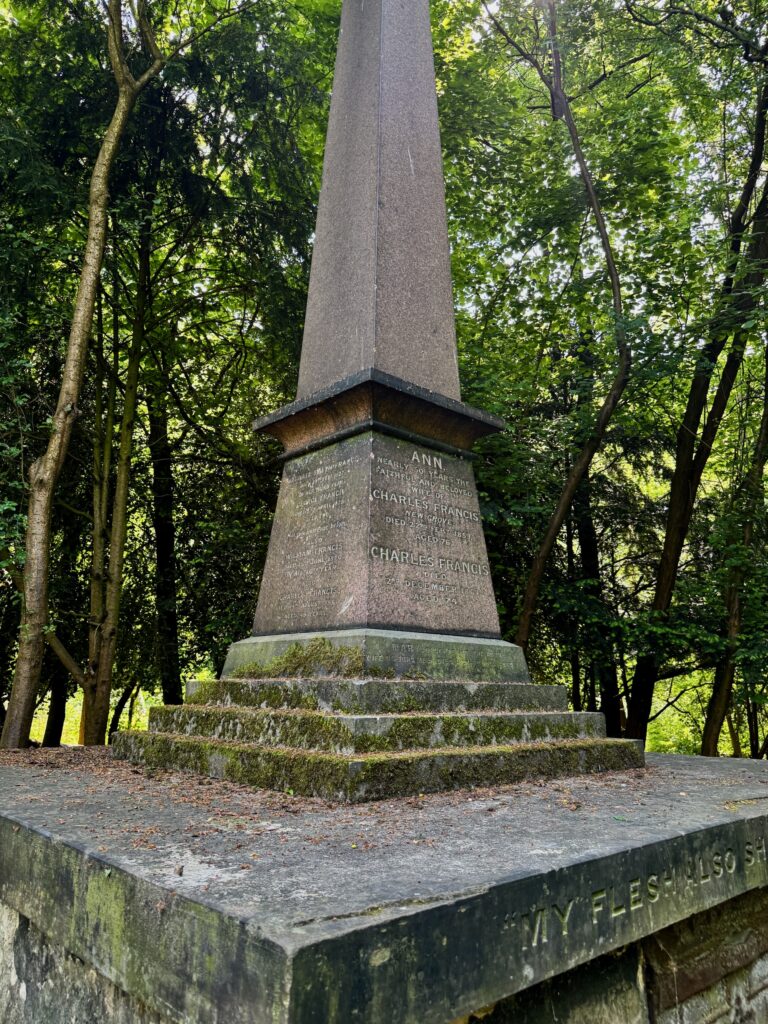
The monument was designed with a curious secret: a brick was removed from a wall so that the sun would shine through a wrought iron cross in a door on the western side of the vault at dawn on midsummer’s day …

The Bears were of German Jewish origin but converted to Methodism
and anglicised their names. Those buried here include Henry Bear, a wealthy tobacco and sugar merchant who lived on Cable Street …
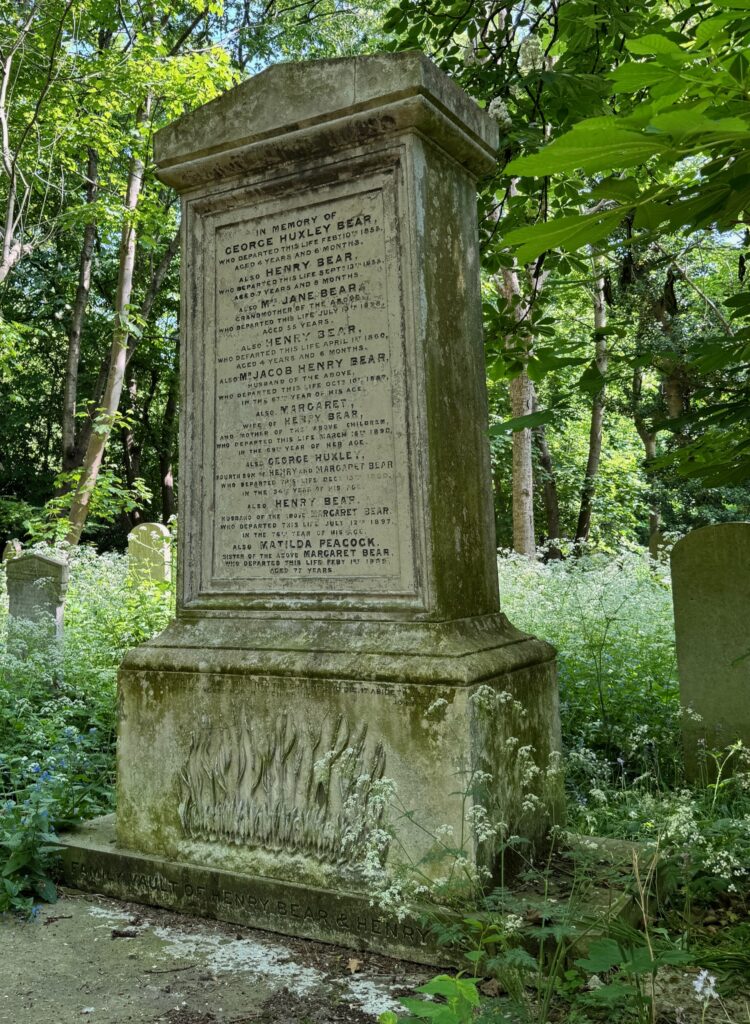
The unusual mural of wheat signifies everlasting life …
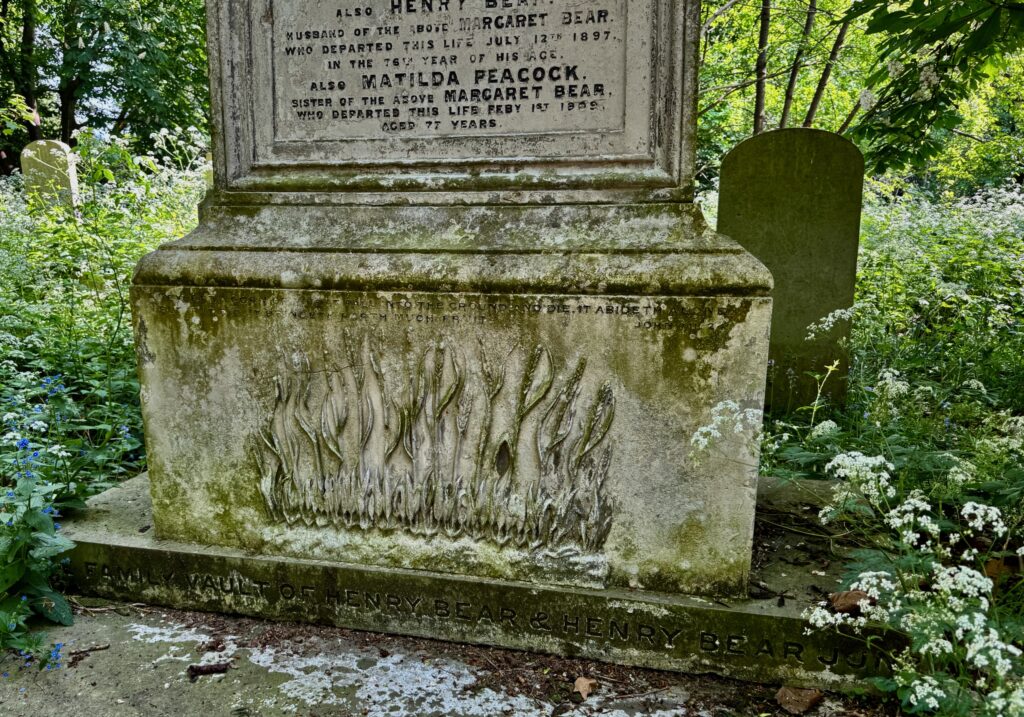
The consoling text from John XII, v 24 “Except a corn of wheat fall into the ground and die, it abideth alone: but if it die, it bringeth forth much fruit.”
This is the grave of Will Crooks (d. 1921) and his second wife Elizabeth.
A casual labourer in the docks he became politically active and was one of the leaders of the historic 1889 Dock Strike,in which dockworkers
successfully demonstrated for increased wages …
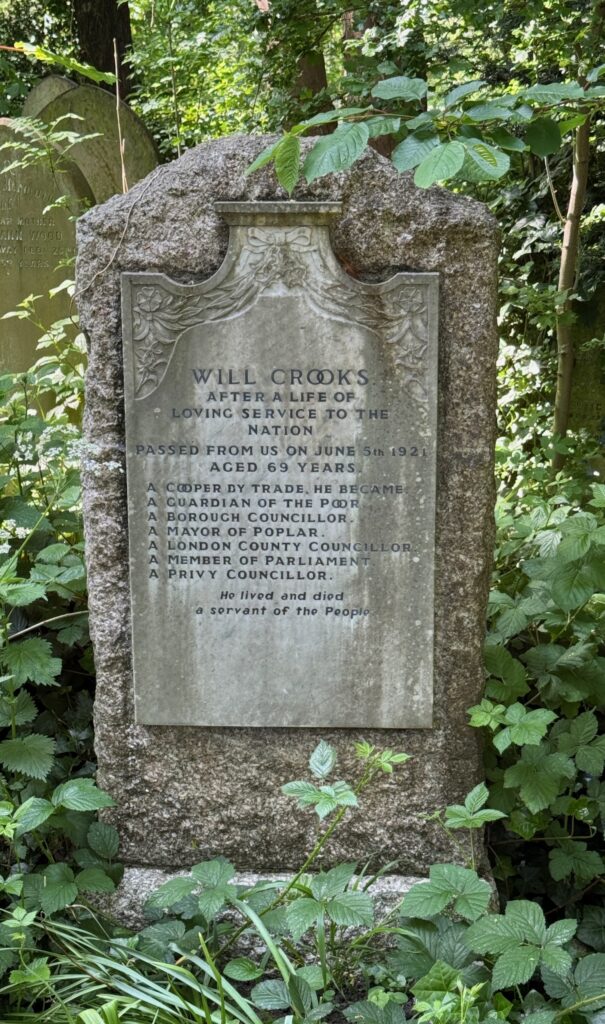
He campaigned not only for fair wages but also open spaces, technical education and the opening of the Blackwall Tunnel. He became London’s first Labour mayor in 1901 when he was named Mayor of Poplar. He was elected to Parliament in 1903 winning in Woolwich, a traditionally Tory constituency …

The grave was rediscovered and the Labour Party and local council paid for its restoration. A true working class hero, you can read more about him here.
This small stone marker commemorates Alfred Linnel …
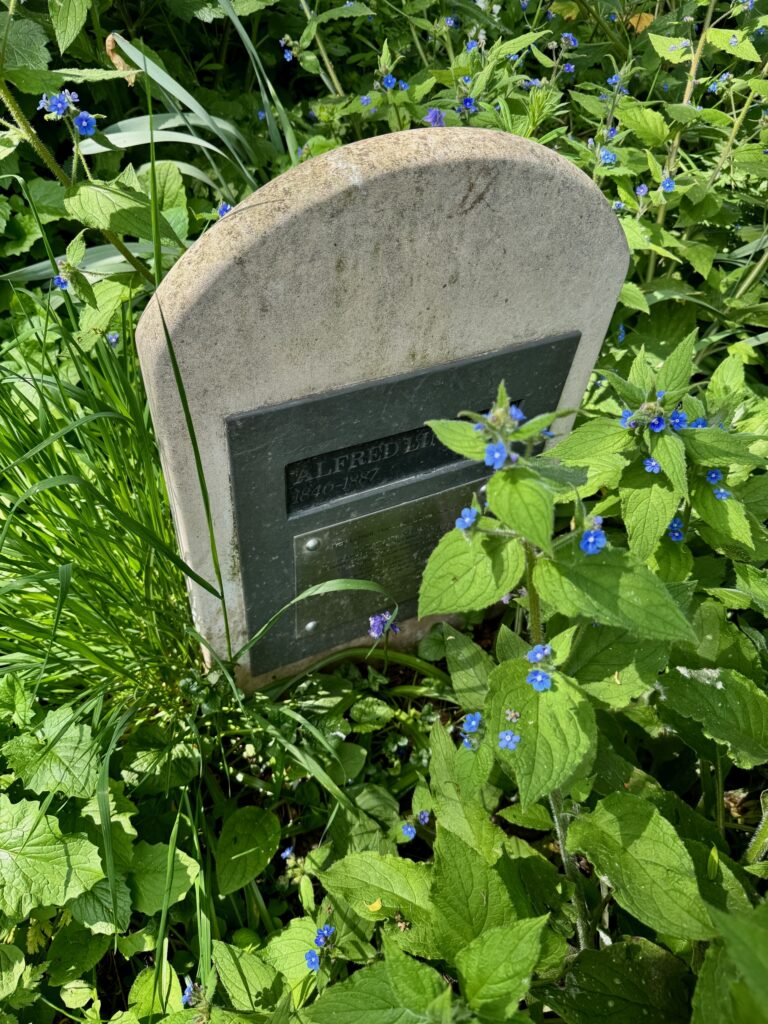
A steel plaque attached to it reads:
‘Alfred Linnell, 1846 – 1887, is buried near this spot.
On Sunday 13th November 1887, ten thousand people marched towards Trafalgar Square, protesting against repression in Ireland and unemployment. Police and troops beat them with truncheons. A week after ‘Bloody Sunday’ Alfred Linnell, joined a gathering in Trafalgar Square to protest against the authorities’ violence. He was knocked down by a police horse and died on December 2nd.
Not one, not one, nor thousands must they slay
But one and all if they would dusk the day.
William Morris.’
The pamphlet printed to raise money for his family …
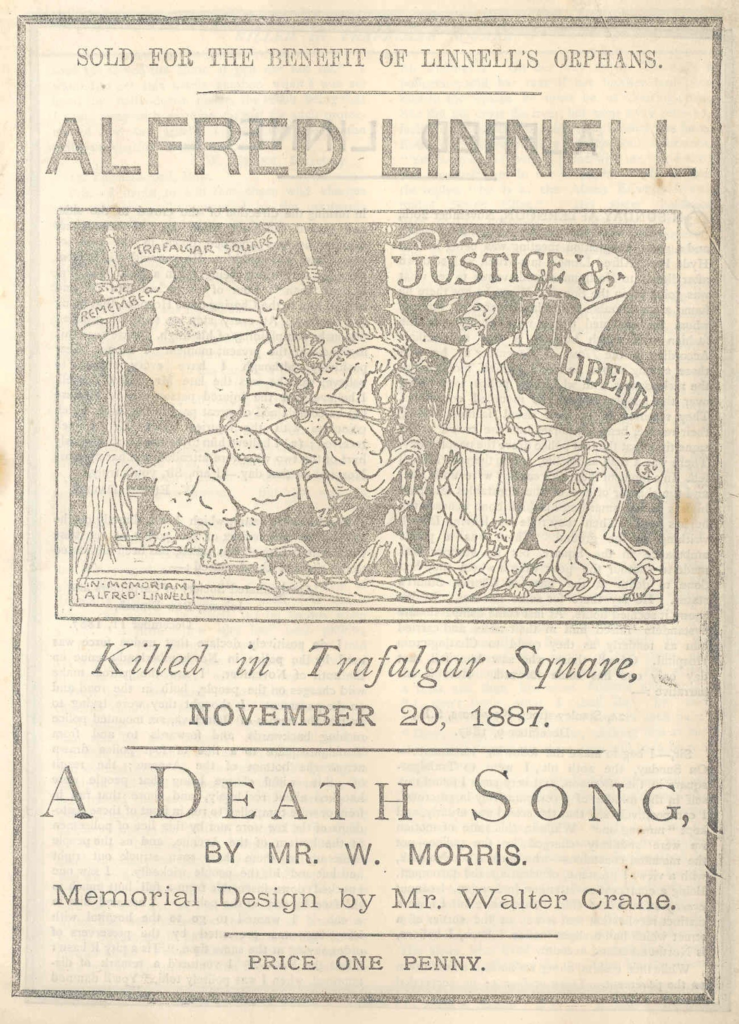
Apparently his was one of the biggest funerals ever held at the cemetery with literally thousands of people following the procession.
Unfortunately I failed to find the grave of Music Hall star (and husband of Marie Lloyd) Alec Hurley. Here’s an image of it I found online …

And the man himself …

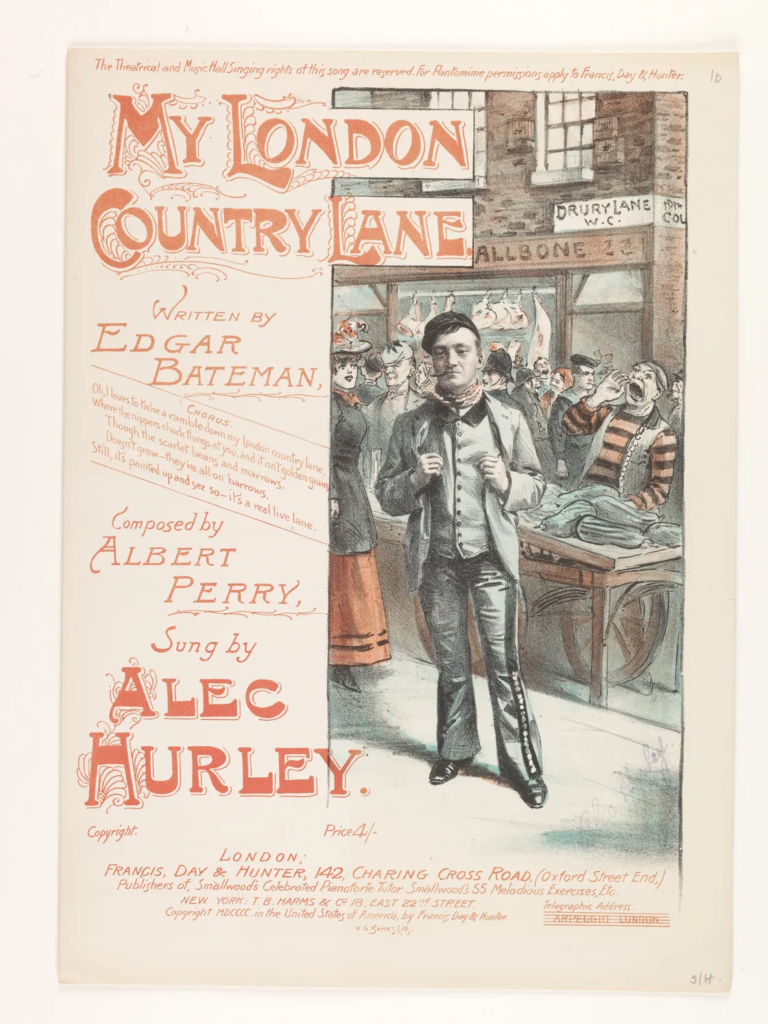
This stone displays very unusual information. Captain John Chrystal was buried at sea and the relevant Latitude and Longitude map co-ordinates are engraved on the family tombstone …
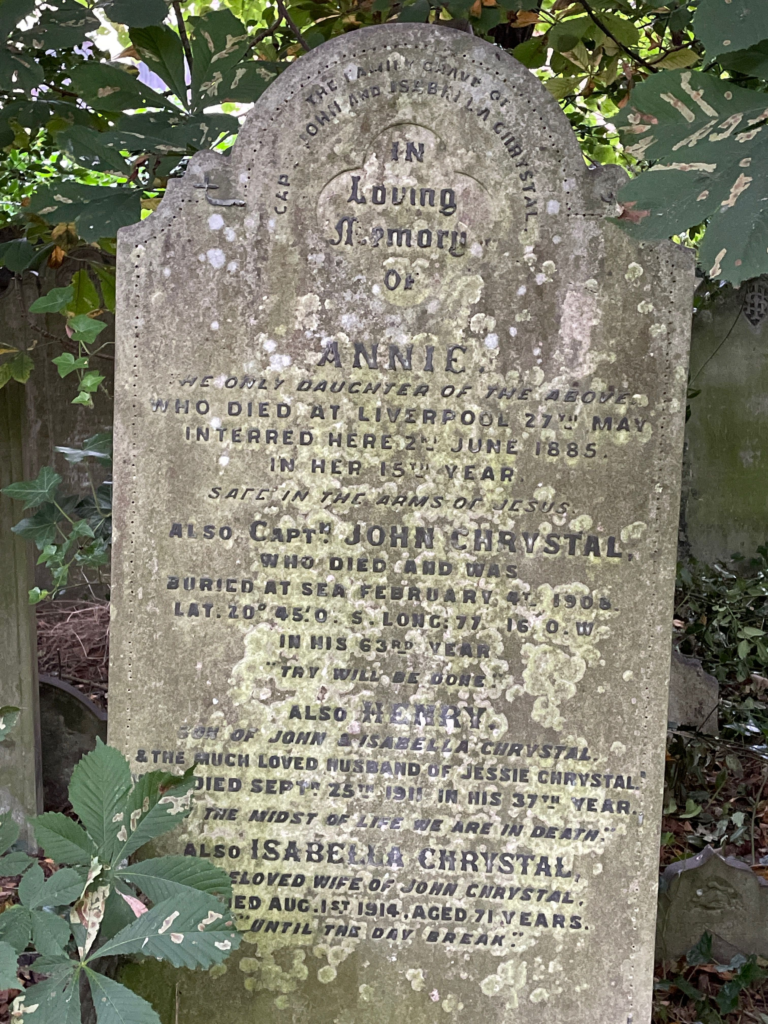
Research shows that his ship, The Travancore, was just off the coast of Peru when he died. The ‘Register of Deceased Seamen’ gives his cause of death as ‘Heart Failure’.
The Travancore …

And John’s Master’s Certificate is also online, along with other documents …
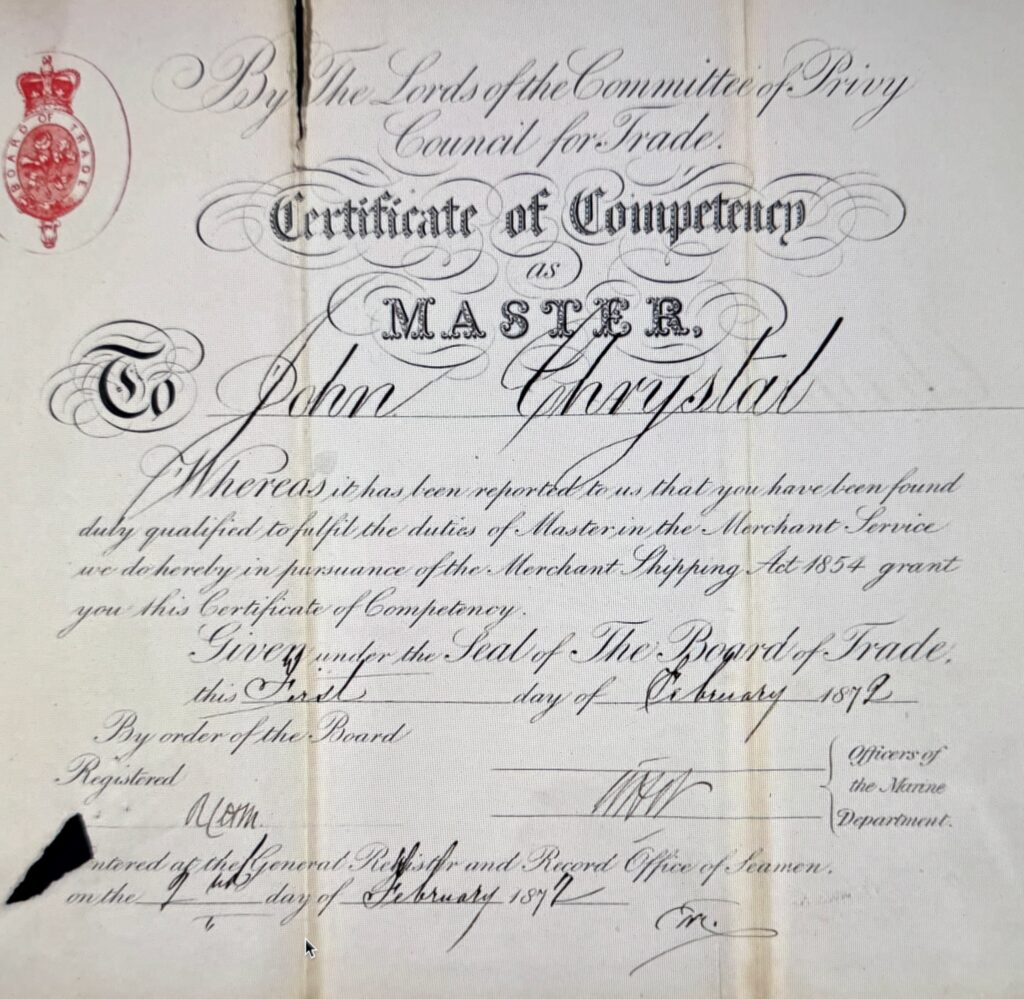
Here are other images I took as I walked around. Some graves seem incredibly close together and, since the graveyard was hit by bombs a number of times during the Blitz, I’m wondering whether the markers were disturbed and have subsequently been propped up again …
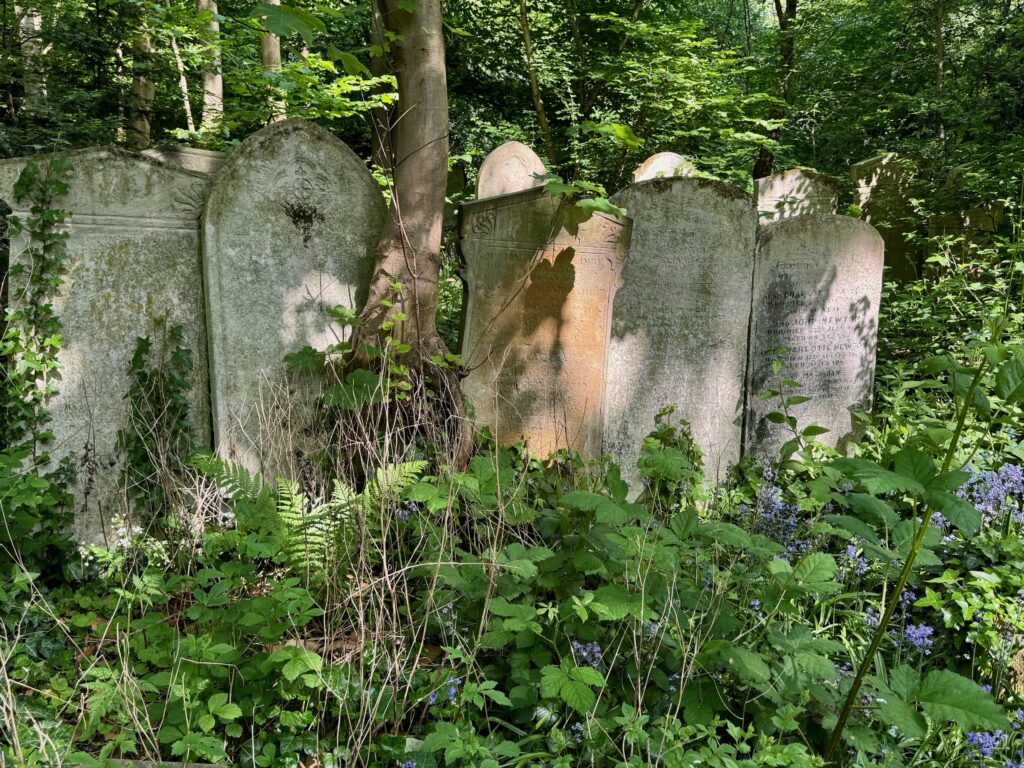
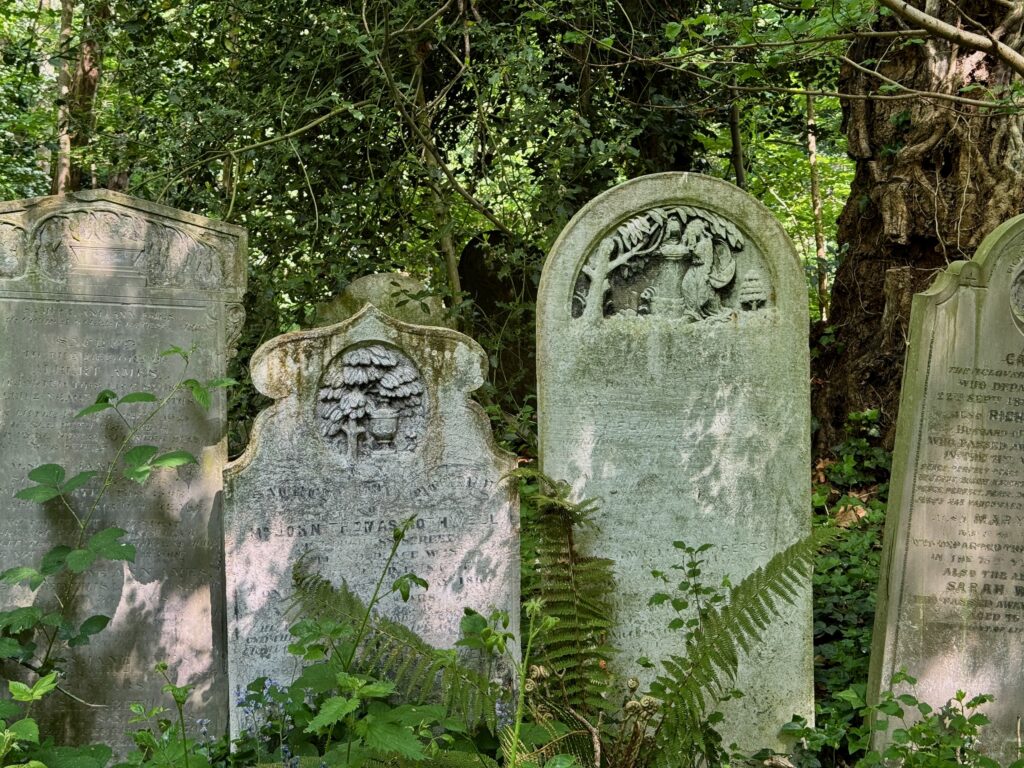
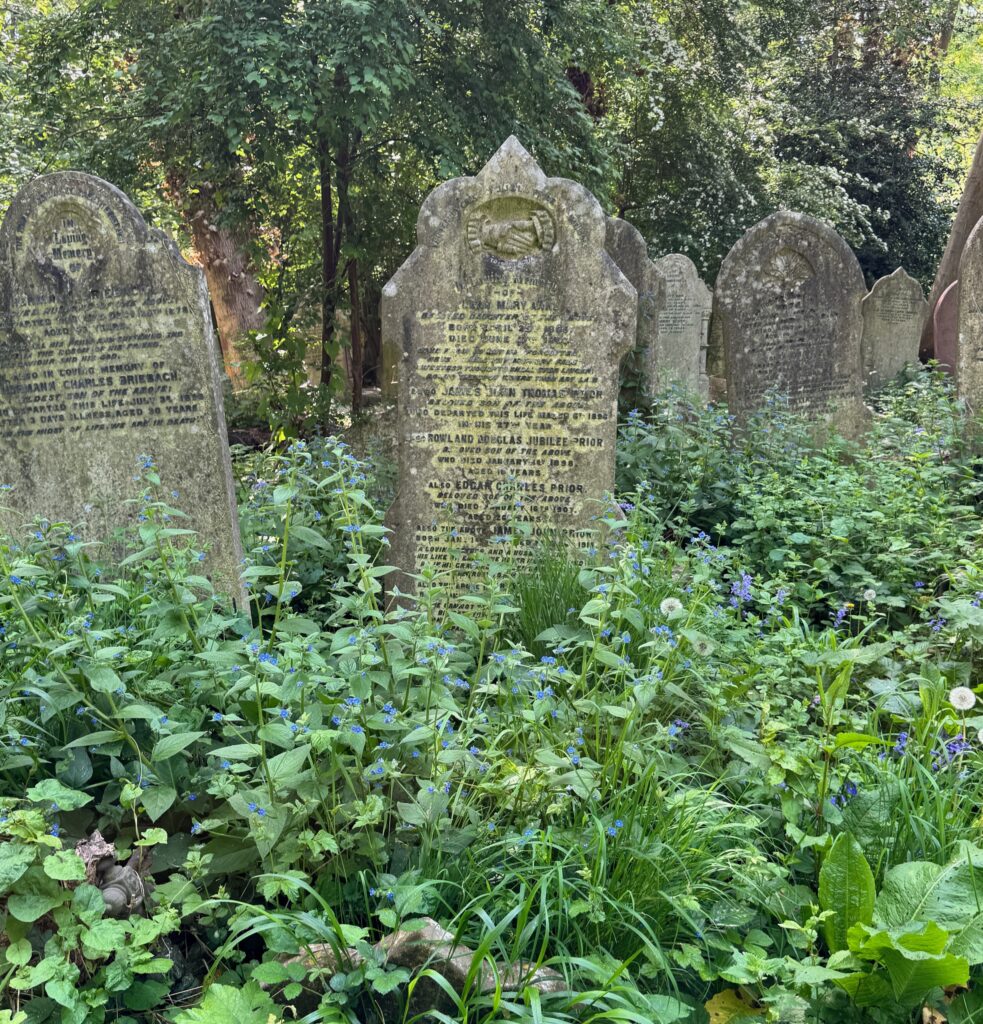
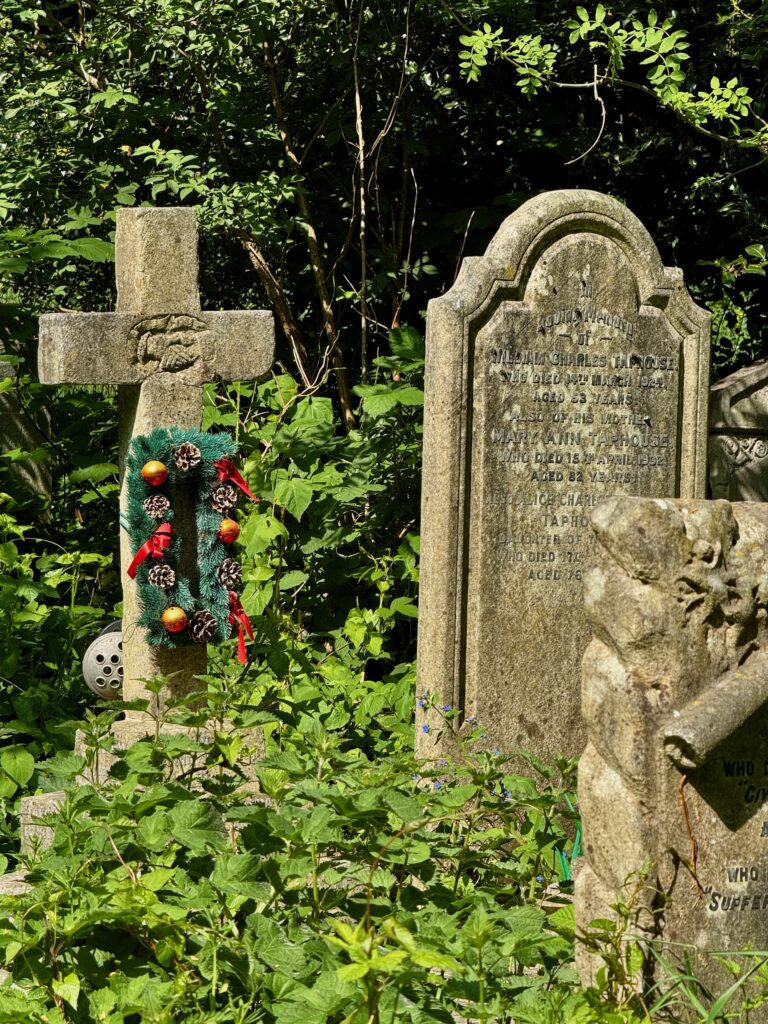
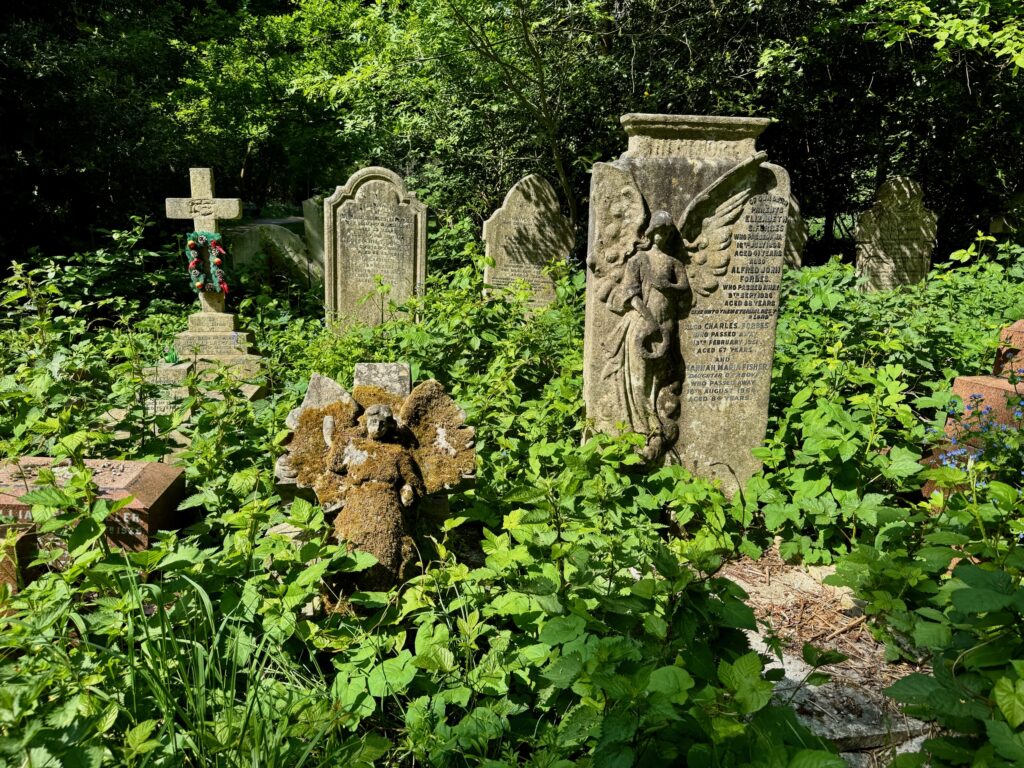


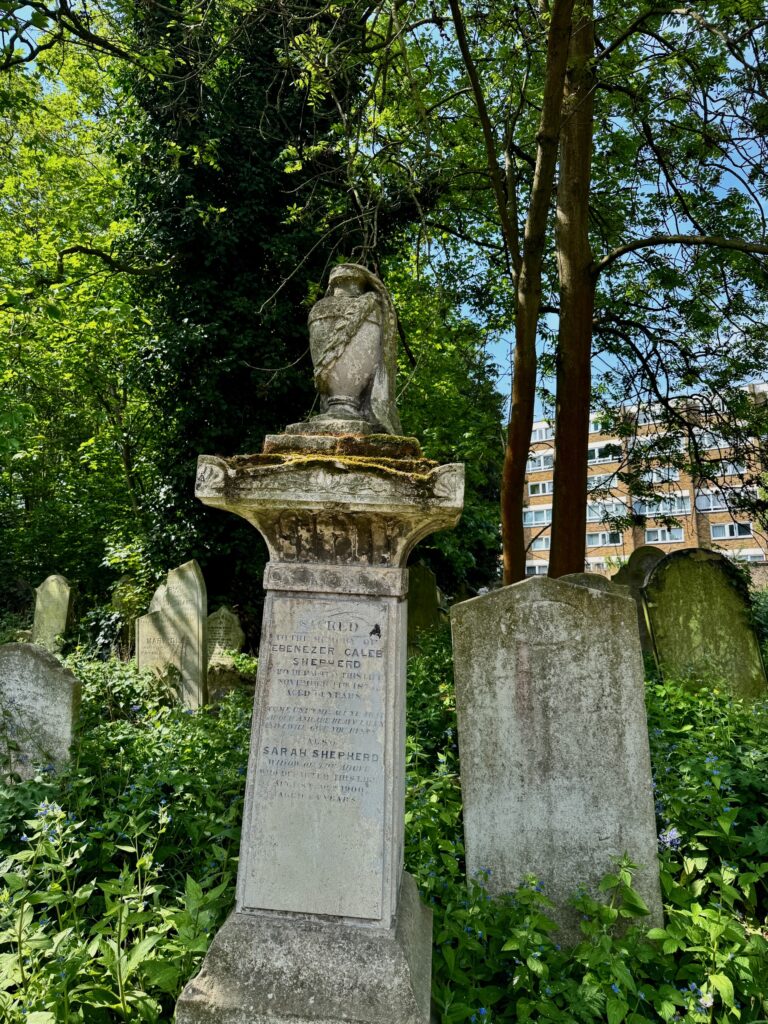
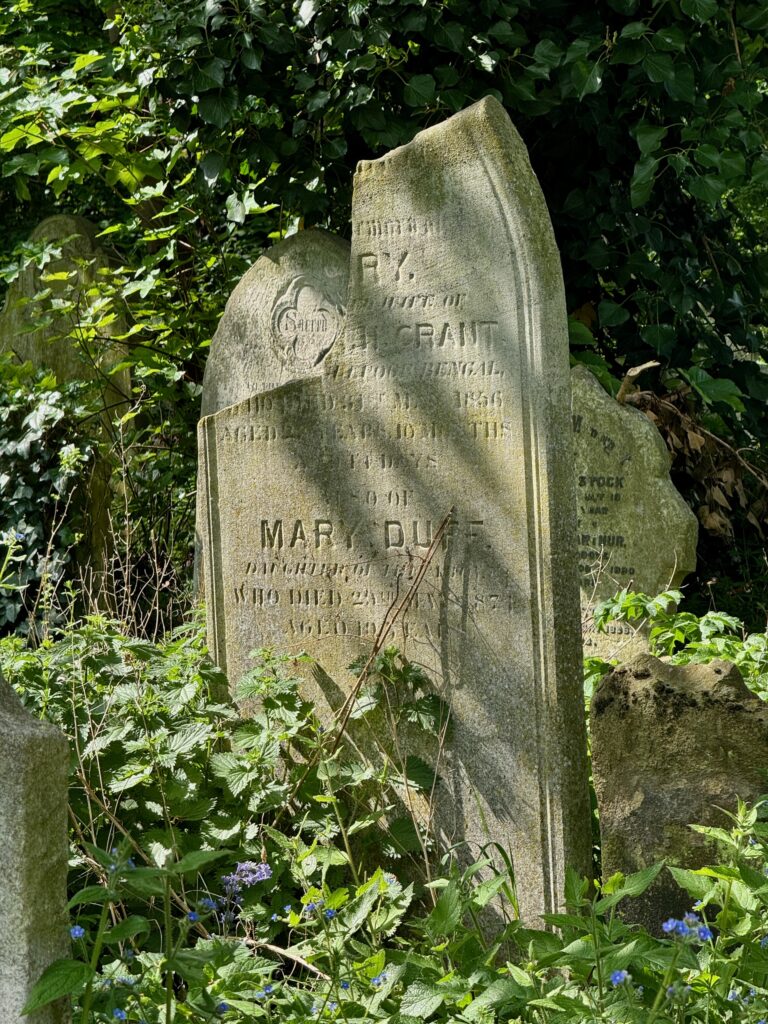
Fred Savill’s memorial incorporates a sculpture of a horse. Maybe he enjoyed a ‘flutter on the gee gees’ …
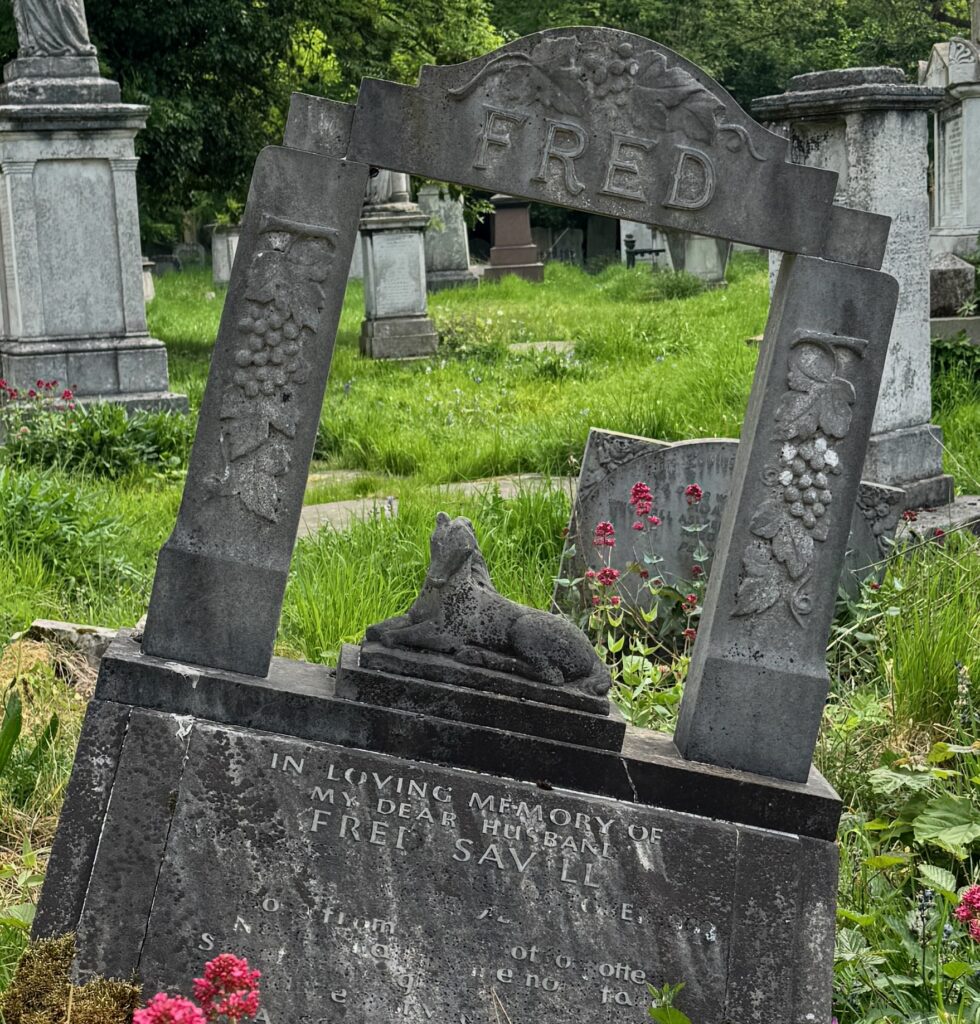
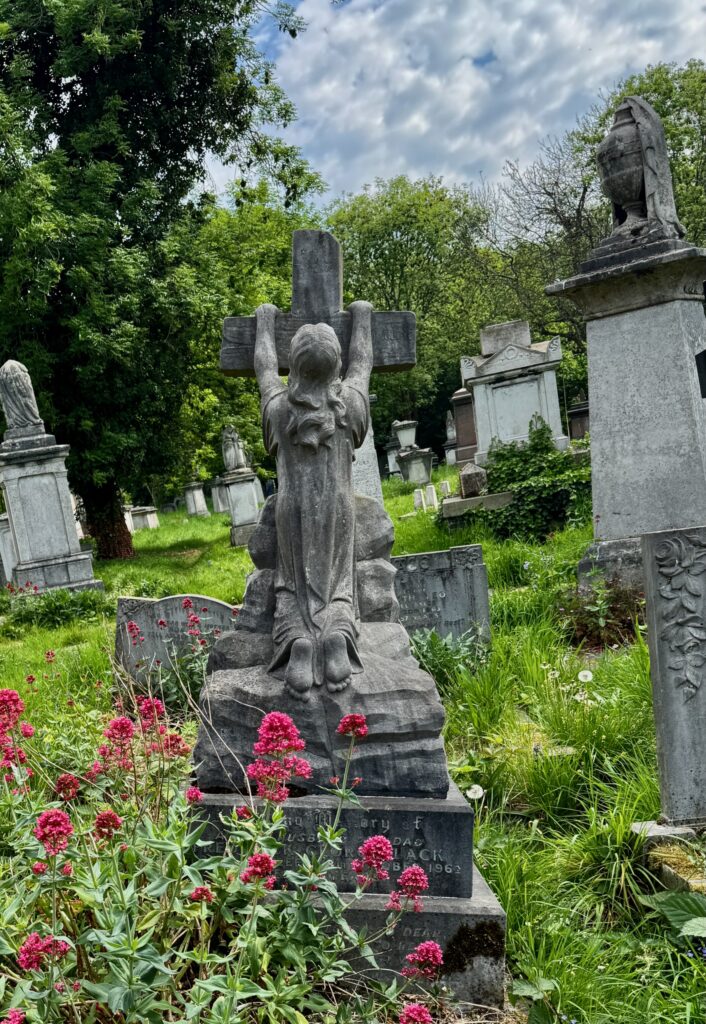
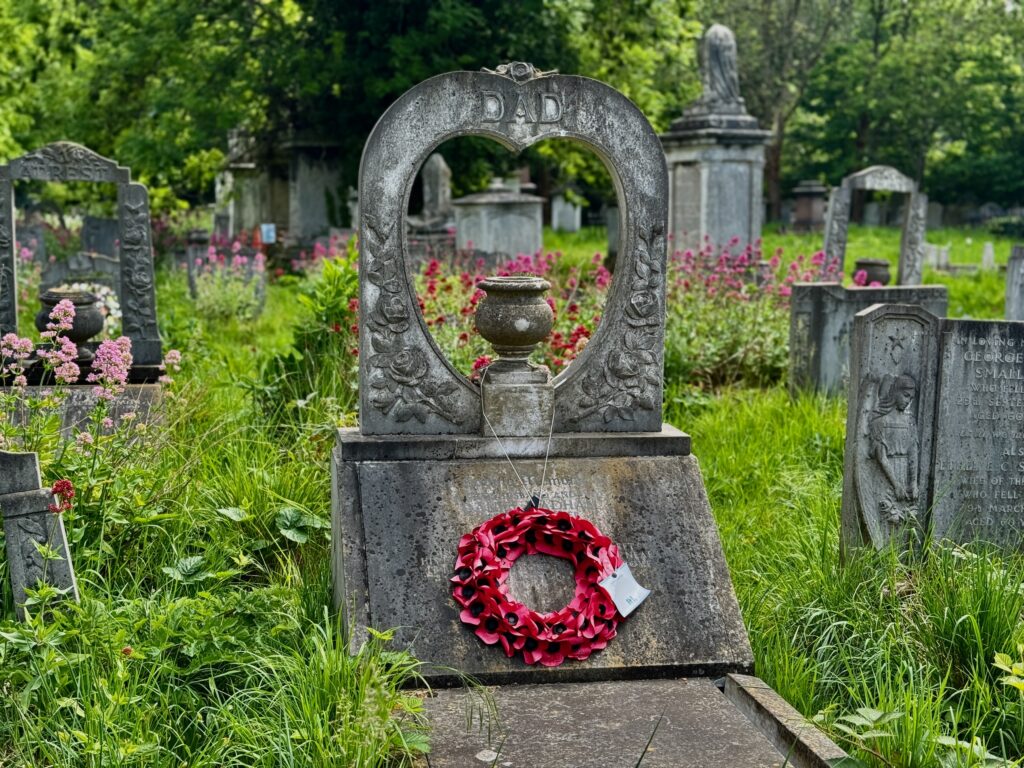
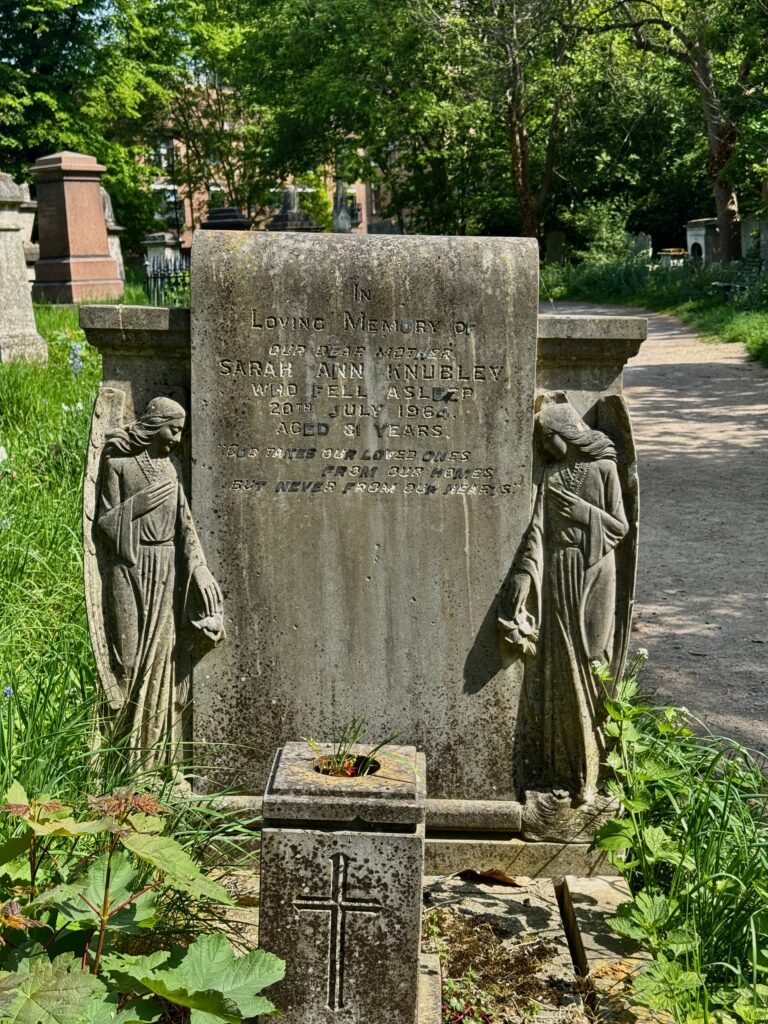
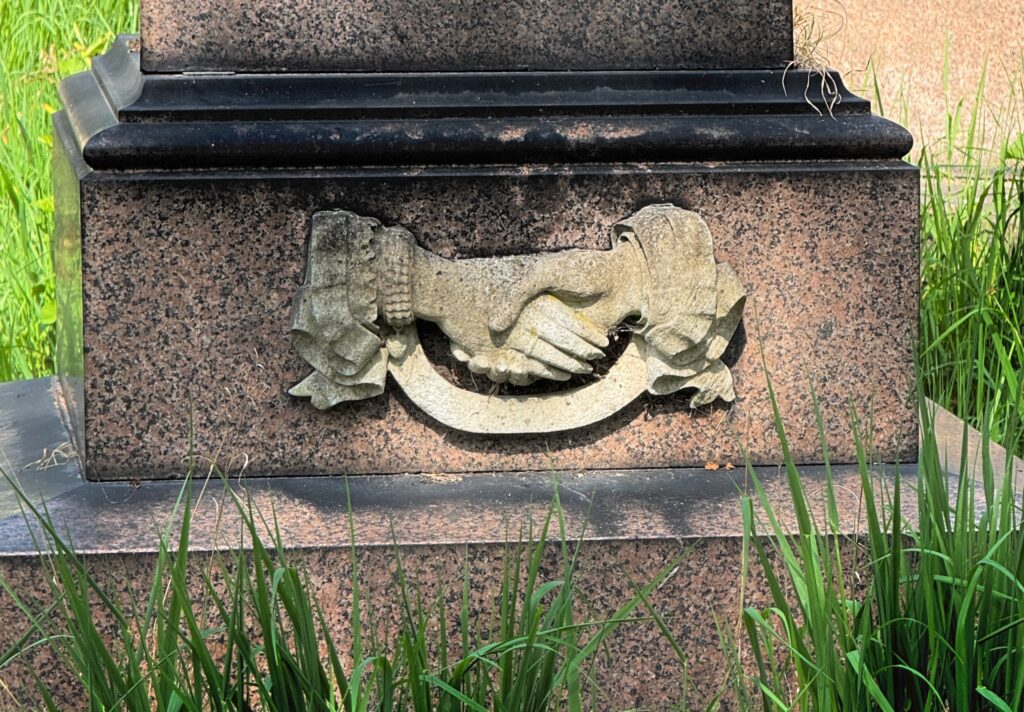
Though filled with gravestones and funerary monuments, the cemetery has been allowed to revert to resemble a natural woodland, with many wildflowers, birds and insect species found in the park. There are several trails and walks created by the Friends of Tower Hamlets Cemetery Park you can follow. Here is one of them.
If you would like to follow me on Instagram here is the link …
